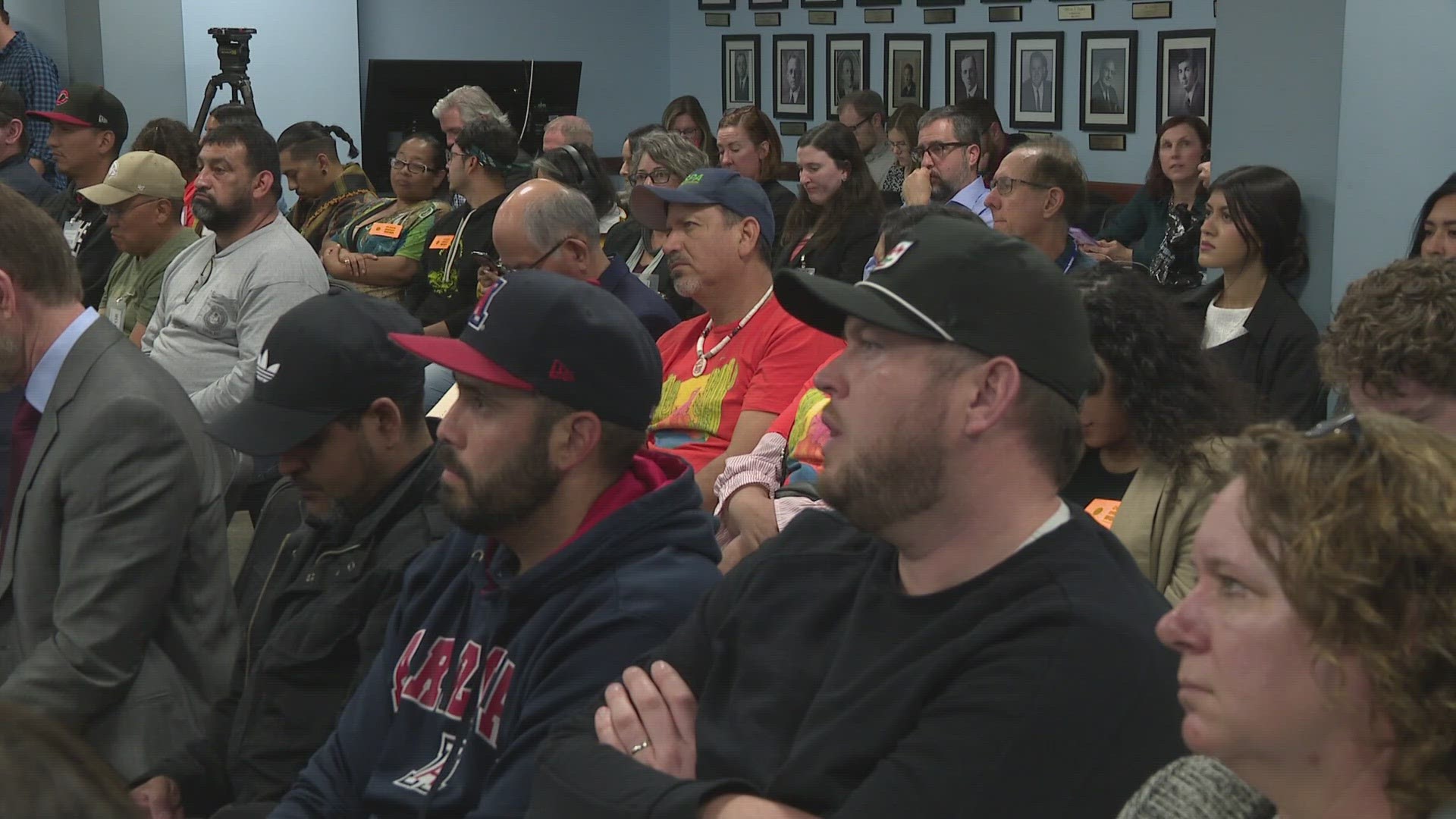PHOENIX — The year 2017 is haunting Diane Brown.
The nonprofit leader worries a previous APS rate case will repeat itself if Arizona regulators aren’t vigilant.
"We hoped the 2017 rate case would be a lesson learned,” Brown said Friday while standing outside Arizona Corporation Commission headquarters. That controversial decision resulted in an actual bill impact about 3 times higher than what APS had advertised.
Customer advocate wants commission to reconsider decision
Inside Commission headquarters on Friday, Chair Jim O’Connor told reporters he’s not concerned that will happen again. O’Connor and his three Republican colleagues approved a new rate plan for APS late Thursday without knowing the exact mathematical impact of the rate increase to customers, although it was projected to be “in the ballpark” of 8.3%.
O’Connor reasoned the margin of error was too small to delay voting for another day.
“If we're talking about a basis point or two, it's not material,” O’Connor said.
Brown says every dollar counts.
As Director of Arizona PIRG Education Fund, Brown submitted a request Friday asking commissioners to reconsider the vote and to call APS’s CEO back to the commission to declare under oath the exact projected impact of the rate hike to all classes of customers.
“Comprehensive data should be entered into the docket, and APS executives should be sworn in before they speak,” Brown wrote in her appeal. "The commission failed to ask the questions necessary to ensure they had adequate and complete data before voting on the entire rate plan.”
Bill impact different for homeowners, schools, businesses
APS said Friday that the average residential customer (using 1,050 kilowatt hours per month) will see an expected bill increase of “roughly 8% or about $10.50 a month.”
Different classes of customers—such as schools and small businesses—will be impacted differently by the new rate structure. The total cost of a monthly bill is also impacted by a homeowner’s “Time-of-Use” plan if they are signed up for one.
Adjustors (or added fees) also play a role. On Thursday, the commission approved a new adjustor that was the subject of intense debate. It would allow APS to pursue new energy resources in the future outside a traditional rate case. 12News asked APS to provide data showing the bill impact before and after “adjustors” are calculated. APS did not respond to that request.
A Commission spokesperson said the agency has asked APS to submit a written updated analysis. The Commission’s Utilities Division is also finalizing data.
“We are waiting for the final numbers,” O’Connor said.
The new rate plan is scheduled to go into effect on March 1st.
'Not letting their pizza get cold'
A key player in exposing the flaws of the 2017 rate case was citizen activist Abhay Padgaonkar. An engineer and APS customer himself, Padgaonkar analyzed the data of millions of customer bills. His analysis in proceedings at the Commission showed the actual bill impact on day one of the 2017 rate plan was three times more than projected.
Referring to Thursday night’s vote, Padgaonkar said ratepayers have the right to know the exact day-one impact as well as the “downstream” impact.
“It appears that this Commission was too cavalier to even wait to quantify the ratepayer bill impact — and not letting their pizza get cold was far more important to them than fulfilling their constitutional duty to prescribe just and reasonable rates,” Padgaonkar said, referring to a comment Commissioner Nick Myers made when casting his vote. Myers had made a lighthearted remark about finishing the vote before pizza was scheduled to arrive at the commission Thursday night.
For his part, Myers (R) said Thursday night the rate case was a “long and grueling process” that he did not take lightly.
“I think we’ve come to about as good of a solution as we probably can,” Myers said.
O’Connor: Predictions of 15% were 'hyperbole'
Leading up to Thursday’s hearing, the state’s customer watchdog, RUCO, said APS’s documents reflected the average customer bill impact would be 15%.
O’Connor called those predictions “hyperbole.”
Asked if he trusts APS to implement the rate plan accurately, O’Connor said it is less about trust and more about math.
“It’s just a mathematical calculation, ultimately,” he said.
However, the 2017 case revealed how the way APS operates as a company dramatically impacts customer bills.
Independent reports and customer complaints revealed poor customer service, inadequate rate plan education, and a flawed online rate comparison tool. APS ultimately entered a $25 million settlement with the Arizona Attorney General’s Office.
Up to Speed
Catch up on the latest news and stories on the 12News YouTube channel. Subscribe today.

